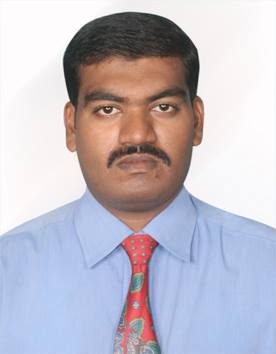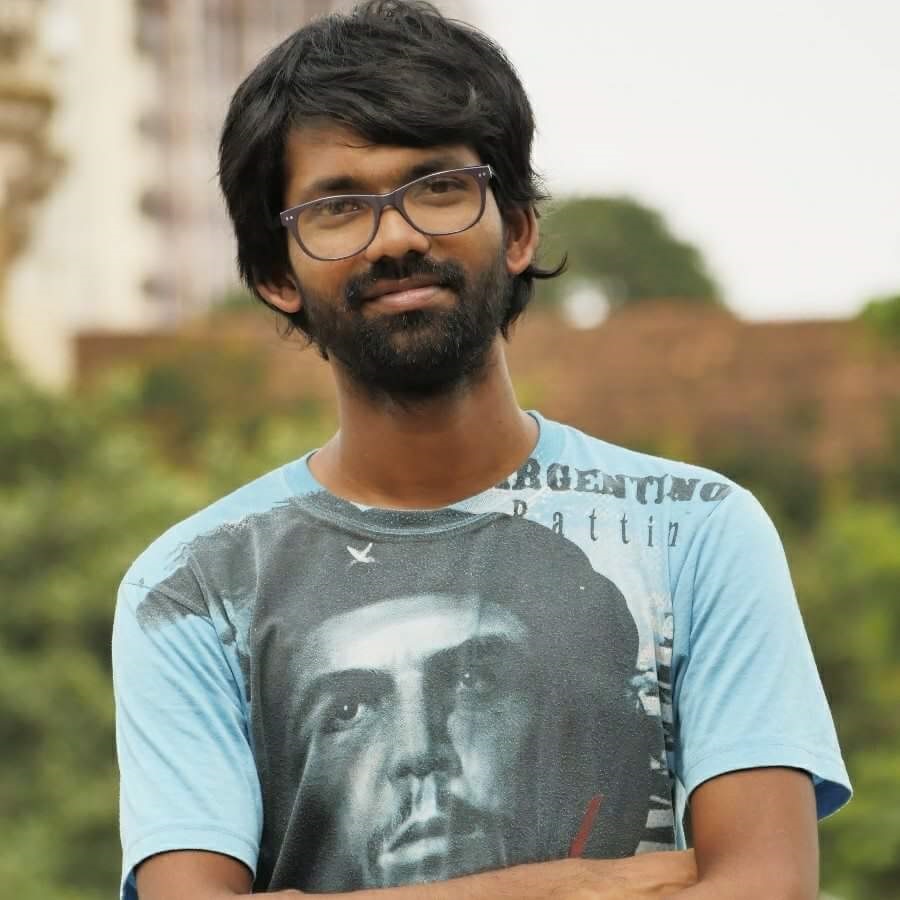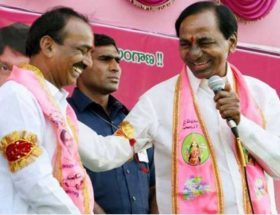Amar Khade
 The Ministry of Social Justice, Government of India, declared “20 March” as “Social Empowerment Day” to commemorate Mahad Satyagraha by Dr B R Ambedkar, in the press release of 20 March 2003.
The Ministry of Social Justice, Government of India, declared “20 March” as “Social Empowerment Day” to commemorate Mahad Satyagraha by Dr B R Ambedkar, in the press release of 20 March 2003.
Brief History of Mahad Satyagraha
The Mahad Satyagraha was launched by Dr B R Ambedkar under his organization Bahishkrit Hitakarini Sabha to end untouchability and press for implementation of the order by Mahad Municipality allowing the ‘untouchables’ to collect water from Chavdar Tank. The Municipality has passed order since 1924 to this effect but it could not be implemented.
The Bombay Council had on the proposal of veteran social reformer of Maharashtra, Shri S K Bhole, passed a resolution on August4, 1923. The resolution ordered all government departments and local boards to allow the ‘Untouchables’ access to public places as they were not allowed to collect water from public tanks nor allowed any facility in school and dharamshalas. The resolution of the Bombay Council was not implemented by Municipal Boards. Dr. Ambedkar decided to launch Satyagraha to get the rights to the deprived sections. He launched Water Satyagraha in Mahad and Dharm Satyagraha in Nasik for this purpose.
A huge public meeting was organized at Mahad under the leadership of Dr. Ambedkar on March 19, 1927 and on the following day about 5,000 men and women led by Dr. Ambedkar marched to the Chavdar Tank and washed their hands.
The incident created a new hope among the depressed sections and at the same time it impressed upon them that nothing could be secured without struggle. This was further evident from the fact that upper caste Hindus “purified” the waters of the tank by pouring 108 pitchers of holy water into it. The Mahad Municipality under pressure withdrew the government order allowing ‘untouchables’ to collect water from the tank.
Accepting both the challenges, Dr. Ambedkar set up Mahad Satyagraha Samiti and launched a new Satyagraha on 25th December 1927. He set out for Mahad with 200 persons on December 24, 1927. He was enroute joined by thousands of Dalits. On reaching Mahad he was told that a case has been filed in a court as Chavdar Lake happened to be the private property. He postponed the Satyagraha in order not to break the law. But he urged the Dalits to send their children to school and promote education equally among women. He said that education would ensure their empowerment and better future.
Dr. Ambedkar filed a writ in the Court seeking water rights for the Dalits in Chavdar Tank. He personally fought the case, which lingered on for several years. It was after a decade that the Bombay High Court gave a verdict in favour of Dalits on March 17, 1936. It was a historic victory for Dalits both on moral and legal grounds.
In his statement at the time, Dr. Ambedkar put the movement in the broadest possible context. Why do we fight, he asked. It is not simply for drinking water; drinking the water will not give us very much. It is not even a matter of only of our human rights, though we fight to establish the right to drink water. But our goal is no less than that of the French Revolution. This was fought for the reconstruction of society, for the eradication of the old society based on feudal inequality and the establishment of a new society based on liberty, equality and fraternity. Similarly, we want to end the old inhuman caste society based on inequality and reconstruct the world, reconstruct society on the basis of liberty, equality and fraternity. This is our goal!
After Eight Decades of Mahad Satyagraha
After 89 years, there has been much empowerment of the ex-untouchable communities under the various legal provisions of the Indian Constitution .But still Caste practices are rampant in our society. We still daily read various accounts of caste based discrimination and caste based violence towards the oppressed ex-untouchables known as the Dalits. Arson of their place of residence, rapes, murders, chopping of hands, garlanding with footwear and parading naked are some of the brutal crimes committed in the name of Caste. Even discrimination has evolved, and is subtly followed in modern society. For example, renting of office and residential place on caste lines, exclusion of certain caste people in religious functions, discrimination in educational institutions and universities, derogatory abuse of person based on his caste background. There are various documented cases of the above discrimination carried out in the name of caste.

Recently, on 8 March 2016, a Dalit boy drowned in a well while trying to fetch water after allegedly being denied to quench his thirst from the school’s hand pump, in Khamaria Kalan village in Damoh’s Tendukhera tehsil, Madhya Pradesh on Tuesday. All the teachers of the primary school including the principal – in all. 5 in number- have been suspended by the CEO of Janpad Panchayat late on Tuesday night. After finishing his mid-day meal on Tuesday Veeran Ahirwar, student of class three, went to the hand pump of the school to quench his thirst, his brother Sevak, a student of class five, told reporters. But some teachers turned him away, he alleged. He said that many times in the past too, teachers had asked them not to use the hand pump and they are forced to use the well to take out water to drink. The incident took place at a primary school in Khamaria Kalan in Tendukhera. Veerna then reached the nearby well, tied his water bottle with a rope to fetch water. The little boy however, lost balance and fell into the well. Tendukheda Janpad chief executive officer Manish Bagri suspended the principal and three teachers among others. Bagri said that an inquiry has also been ordered. He also said that the children in the school confessed to him that they were discriminated on caste lines over fetching water.
On 21 September 2014, eleven children, all cousins belonging to a Scheduled Caste family, were removed from a government primary school in a village in Bikaner after two of them drank water from an earthen pot meant for an upper caste teacher. The teache, Mangal Singh, was arrested late on Friday night after the family lodged a police complaint against him.”We arrested the teacher on Friday night and have seized records from the school,” District Collector Aarti Dogra told The Hindu. “The Sub-Divisional Magistrate and the District Education Officer were immediately sent to the village and asked to submit a detailed report. We are awaiting their report before any further action is taken,” Ms Dogra said. The incident was reported from a government school in Tat village in Nokha tehsil, about 70 kms away from the district headquarters. On September 1, two cousins – Virendra and Rakesh — drank water from the earthen pot meant for Mangal Singh. This enraged the teacher, who reportedly humiliated the two students and even beat them up. When their parents, Mangilal and Prakash Ram Meghwal, complained to the teacher the following day, Mangal Singh is said to have told them that the children had “defiled” the water by touching the pot. However, Mangal Singh called the parents again on September 6 and apologised to them for his behaviour.
Some statistical data on Caste Based Discrimination and Violence
According to the National Confederation of Dalit Organizations (NACDOR), in 37.8% of villages in India, Dalit students are made to sit separately in government schools. In 27.6% of India’s villages, Dalits are prevented from entering police stations. In 25.7% of the country’s villages, Dalits are prevented from entering ration shops. In 35% of villages, Dalits are barred from selling produce in local markets. In 47% of villages with milk cooperatives, Dalits are prevented from selling milk, and in 25% of such villages, they are prevented from buying milk altogether. Further, according to official Indian crime statistics, 27 atrocities against Dalits are committed every day, 13 Dalits are murdered every week and 3 Dalit women are raped every day. A crime is committed against a Dalit every 18 minutes. This, despite the Scheduled Castes and Scheduled Tribes (Prevention of Atrocities) Act, 1989. Worse, these crimes are on the rise. According to data released by NACDOR, a total of 3,198 cases related to atrocities on Dalits have been registered between 2004 and 2013 as against 1,305 from 1994 to 2003. These crimes rose by another 19 percent in 2014. According to statistics compiled by the National Crime Records Bureau (NCRB), crimes against SCs rose to 47,064 in 2014 from 39,408 in 2013. In 2012 there were 33,655 crimes against Dalits, about the same as in 2011. The National Human Rights Commission Report on the Prevention of Atrocities against Scheduled Castes says that, “every 18 minutes a crime is committed against a Dalit. Every day 3 Dalit women are raped, 2 Dalits are murdered and 2 Dalits Houses are burnt in India, 11 Dalits are beaten. Every week: 13 Dalits are murdered, 5 Dalits home or possessions are burnt, 6 Dalits are kidnapped or abducted.”
In terms of their social and economic status: 37 percent of Dalits are living below poverty in India. More than half (54%) of their children are undernourished. 83 per 1000 children born in Dalit community face the probability of dying before the first birthday. 45 percent of Dalits do not know how to read and write . Dalits women burden double discrimination (gender and caste) in India. Only 27 percent of Dalits women give institutional deliveries in India. About one third of Dalit households do not have basic facilities. Public health workers refuse to visit Dalit homes in 33% of villages. Dalits are prevented from entering police station in 27.6% of villages. Dalit children had to sit separately while eating in 37.8% of Govt. schools. Dalits do not get mail delivered to their homes in 23.5% of villages. Dalits are denied access to water sources in 48.4% of villages because of segregation & untouchability practices. Half of India’s Dalit children are undernourished, 21% are severely underweight & 12% die before their 5th birthday. Literacy rates for Dalit women are as low as 37.8% In Rural India.
Epilogue
In spite of strict laws, the conviction rates are very low in cases of caste based discrimination and caste violence. The laws are not acting as a deterrent to prevent these kinds of caste crimes in the future. Also the lack of Constitutional Morality and fraternal relation among the different communities is one of the main reasons for the occurrence of caste based crimes. The system of graded inequalities inherent in the Caste system has created notions of purity, high and low, which further prevents the social endosmosis of the Indian Society. The failure to address this particular problem is due to several causes – right from policy measures whch fail in empowerment of the oppressed ex-untouchables to proper implementation of the laws. Better conviction rates, more inter-caste and inter-religious marriages, introduction of pedagogical curricula relating to caste in educational institutions, encouraging change in notions of caste and inculcating more constitutional moralities can be various approach to curb the menace of caste for building a better India.
~~~
Amar Khade is a self-employed engineer by profession and an anti-caste activist by choice.
Picture courtesy: the internet.










